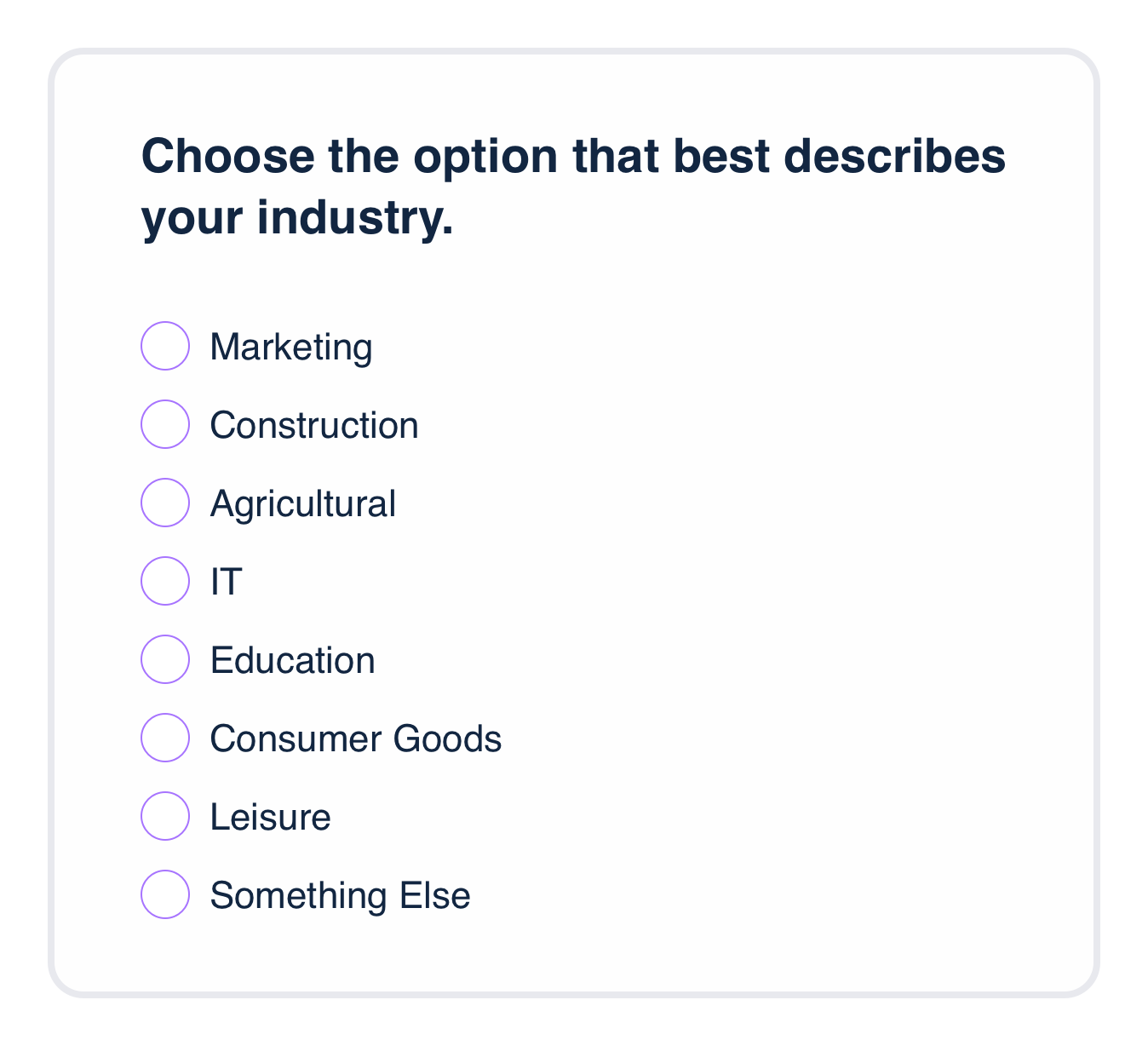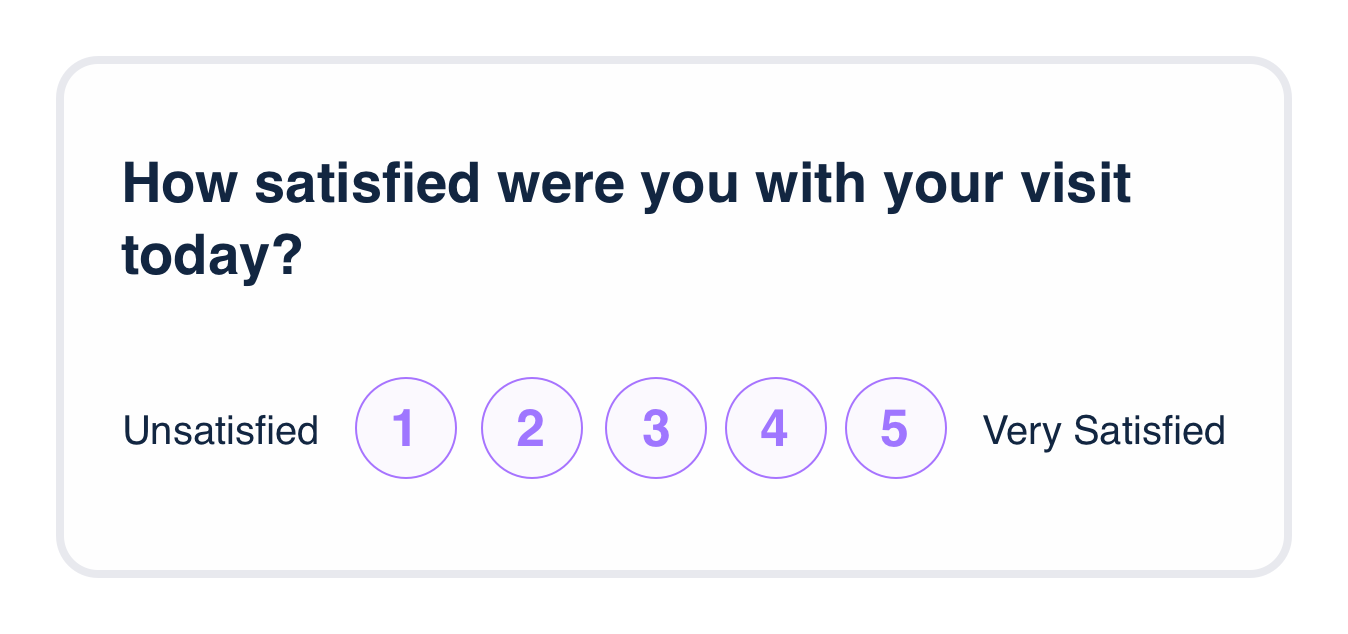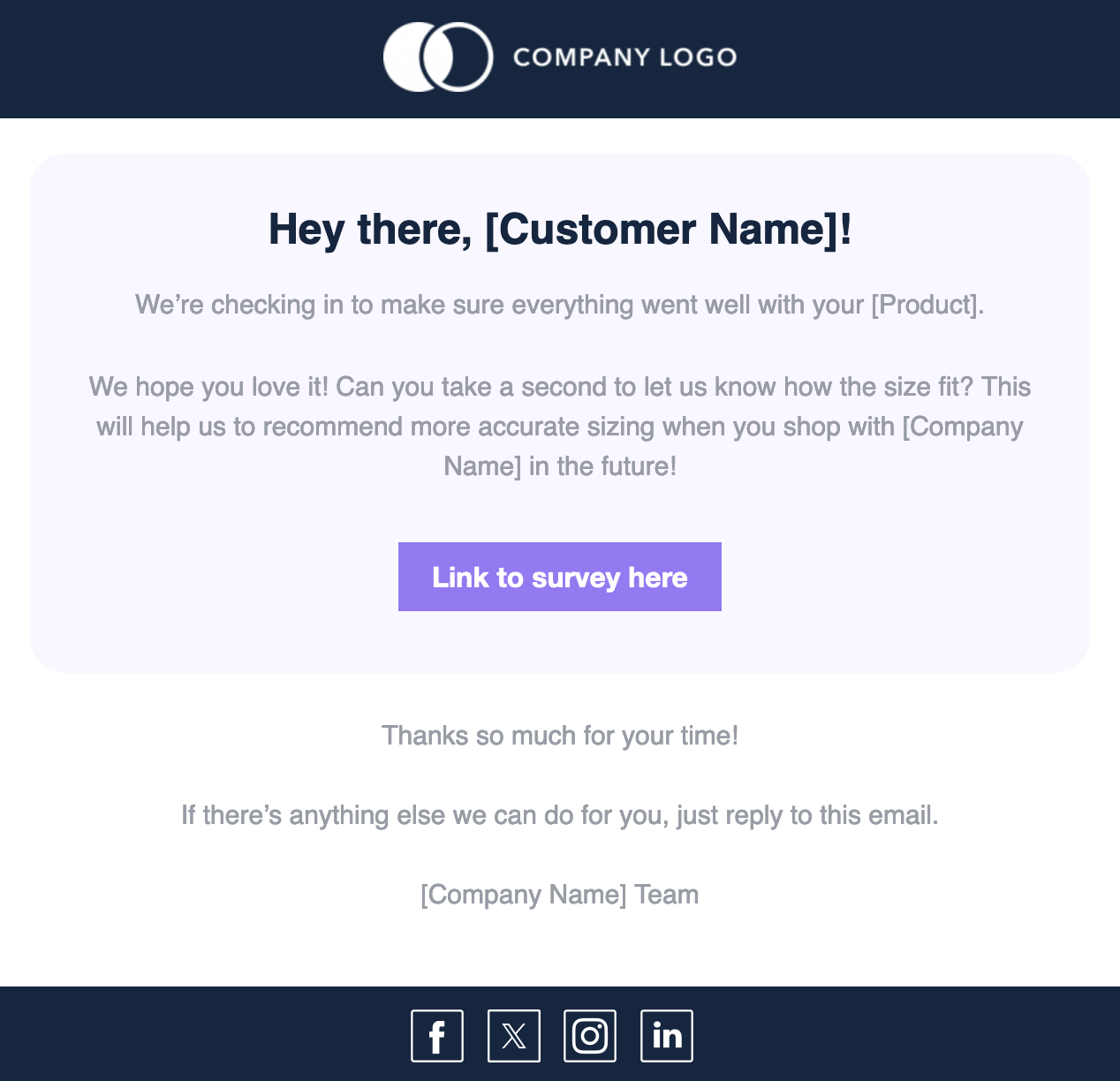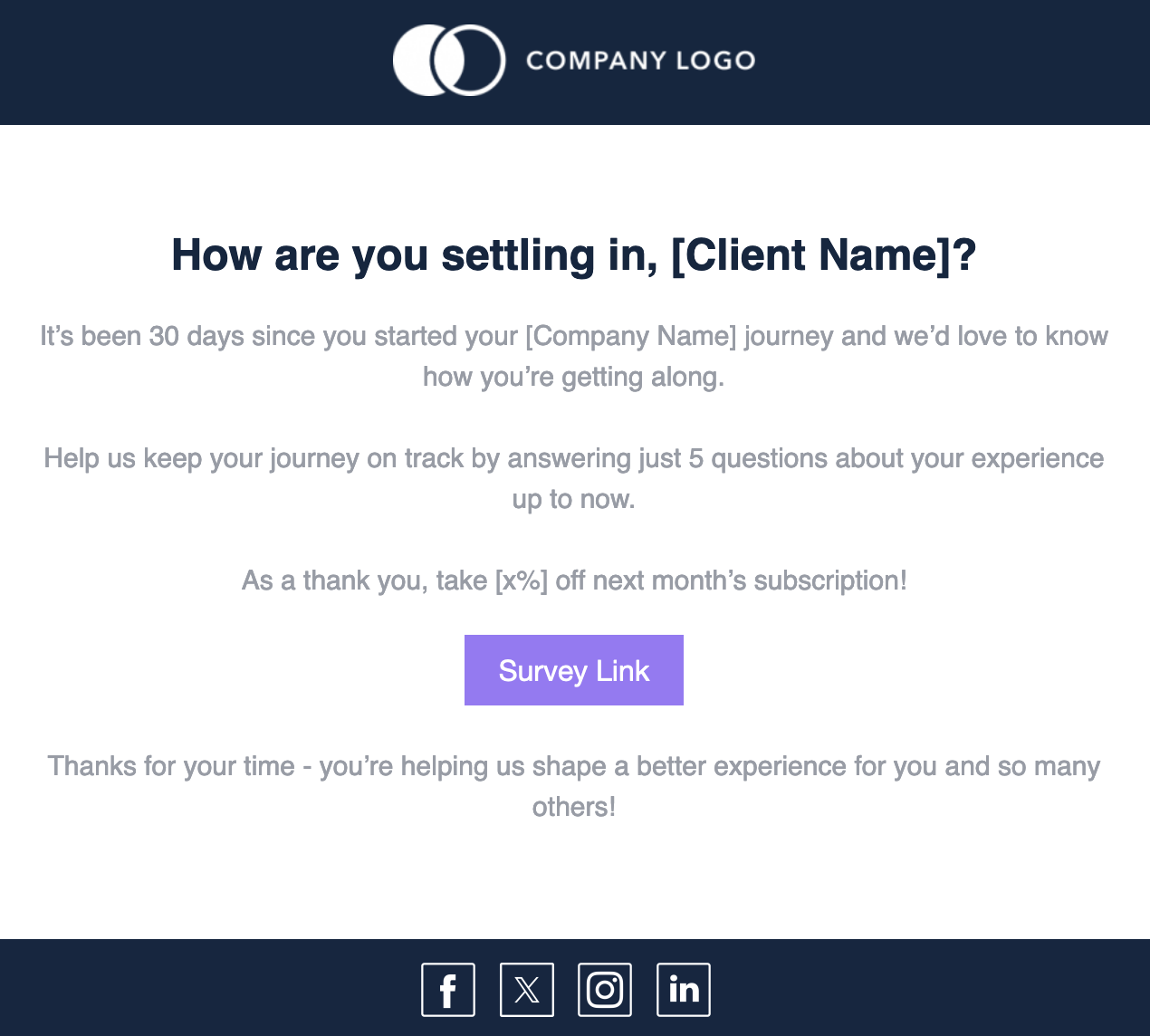Customer surveys are common practice today. They’re a way for businesses to get a pulse check on how customers are receiving them.
However, survey overload leads to low response rates and quality. To break through, you need to follow customer survey best practices.
This ultimate guide is all you need to send customer surveys that contribute to year-on-year growth. We’re covering our top tips - from questions to include and ways to send customer surveys.
A customer survey is a questionnaire sent to customers to find out about the customer experience (CX).
Also known as a customer satisfaction survey or customer experience survey, it’s a way for businesses to learn how satisfied their customers are with a specific product or service, or an interaction with the company’s customer service team.
.webp)
It’s tempting for businesses to bury their heads in the sand and pretend everything’s great. However, getting honest customer satisfaction survey answers - and acting on them - is crucial.
It can mean the difference between long-term, happy customers and people who switch to your competitor instead.
Regularly send out customer survey questions to check your current CX standards. Customer survey best practices recommend reaching out to a large number of people using a customer feedback email template.
You’ll get access to hundreds of templates when you use an email builder. This is software with drag-and-drop capabilities, making it quick and easy for anyone to design emails.
Sending out customer surveys will help you gather a representative sample that showcases overall trends.
From there, you can learn what aspects customers are happy with and what needs to be improved.
With so much fierce competition nowadays, only the companies that meet their customers’ needs can thrive.
You want to ask enough customer survey questions to get ample insights but not so many that your respondents get overwhelmed and give up. It’s a balancing act.
Plan your questions around two main goals:
To choose the right questions, consider whether you’re getting intel into the company in general, a specific product or service, customer support or customer loyalty.
From there, you can put together a combination of metrics-based, and open-ended, exploratory questions.
Follow these best practices for customer surveys for the best results. This is how you gather the most, honest responses that will help shape your business for the better.
“Survey fatigue” is real. CustomerThermometer found that only 9% of people answer long surveys thoughtfully, and 70% have abandoned a survey before completing it.
A good rule of thumb is to keep surveys under 10 questions.
Use plain, direct language. Avoid jargon and aim to write in a way your target audience will understand and relate to.
Avoid the urge to pack multiple topics into one question as this will confuse your data. Focus on one topic or opinion per question.
Biased questions can skew results. Make sure your customer survey questions don’t use any leading questions that could influence answers.
The key is to keep questions neutral. Avoid positive or negative language, such as “Did you enjoy this great new feature?”
Minimize distractions by sending plain-text surveys. Avoid unnecessary images and multi-media and keep the focus clear: A simple customer satisfaction survey.
Give customers a good reason to complete the survey. This could be an actual gift or something of monetary value - such as gift cards, vouchers or even cash.
When respondents are familiar with your brand, this instantly builds trust, which is great for your response rate.
So, include your logo, font and colors to follow customer survey best practices.
Visual branding is a way to maximize engagement when sending a survey via an email newsletter.
Use an email builder that has everything you need to create engaging, beautiful emails that can be exported to your preferred service provider.
An email builder doesn’t call for coding or design skills. Simply choose from hundreds of professionally designed templates and customize them with your branding.
That’s easy, too. An in-built Brand Kit stores your brand assets across the team, so you can roll out consistent, recognizable survey emails in just a couple of clicks.
Before sending out your survey en masse, test it with a small sample of your target audience. This should give you a feel of how engaging your survey is, and what you should change to maximize the response rate.
It is also a good idea to ask some friends to tell you what they think each question is asking. This helps to minimize the amount of ambiguity in how the reader interprets the questions.
Use an email builder with powerful analytics to help. With heatmaps and click maps, you can visually see which content is performing, and you can track open rates and click-through rates to optimize your survey emails.
Even if you send emails in Outlook, Gmail, Slack, social media or another email service provider, an email builder lets you analyze how well they’re being received in the world.
Consider survey design before writing out your questions. This is all about the types of customer surveys you can choose from.
For us, the best surveys include a mix of questions so you can gather both quantitative and qualitative data. Here are a few types of CX survey questions.
This is a closed question with only two possible answers: Yes or no, true or false, thumbs up or thumbs down, and so on.
Some questions that fall into this category are:
This is a beautifully simple question type that enables you to spot trends and make sure certain aspects of your business are stacking up to consumer expectations.
Multiple-choice questions tend to have at least three options, where you can either set that only one answer can be true, or allow people to select multiple options.
Often, the options are categorical variables (like names, labels and job titles). This type of question is helpful to segment your audience and analyze data based on their job title or industry.

A survey scale question is a good way to rate customer satisfaction using numbers or labels such as strongly agree through to strongly disagree.This is a standard question that customers will already know how to answer and lets you measure data to track improvements over time.

This is where you gather more personal insights. Open-ended questions deliver the “why” behind the other responses.Open-ended questions help you learn what’s important to the customer, which isn’t possible with quantitative questions. This is where you pinpoint exactly why a certain result is consistently low, and what you could do better.Some examples of open-ended questions include:
Just be sure not to overload your form with this type of question, or you risk creating survey fatigue!
Follow customer survey best practices by considering when to send them.
This all depends on the type of customer survey you’re sending out, as well as your goal. So, while some surveys only make sense at certain points (such as after a purchase), more general surveys can be sent periodically.
You could send surveys:
If you send periodic surveys, remember that you want to collect like-for-like data for comparisons. Keep questionnaires consistent for the best results.
While it’s down to you to determine the best time to send surveys, we recommend staying away from the “autopsy approach”.
This involves waiting until after an event to figure out what went wrong. Instead, send CX surveys throughout the customer life cycle to get a detailed picture of their overall experience.
How will you get your survey from your screen to your customers?
Nowadays, there are so many options enabling you to collect feedback at any stage in the customer journey.
You could send customer surveys via:
Sending surveys by email is a faster, more cost-effective way to reach out to large volumes of customers compared to other distribution channels.
You can create beautiful, engaging emails using an email builder. An email builder has a library of email feedback templates, ready to be customized with your content and sent to your subscribers from any email service provider.
The templates are designed using email-optimized code, so survey emails look great no matter what device and platform customers open them on.
They use engaging designs so you can pull together a powerful email in minutes. Once designed in the email builder, you choose how to send emails.
Make use of a direct integration with Gmail and Outlook, and the ability to send beautiful HTML emails from over 57+ other email clients. For more flexibility, you can even share survey emails as a responsive web page or download them as a PDF with just one click.
Now that you’ve collected insights into the CX, you can analyze the results.
Before you do so, remove responses from anyone who hasn’t engaged meaningfully with your survey. This is usually people who respond randomly or answer every question with “I don’t know”.
Once you’ve cleaned the data, choose from a variety of data processing methods - from graphs to statistical tests and predictive analytics.
To help get you started, here are some steps to analyze your survey data.
Let your inspiration flow with these customer satisfaction survey examples sent via email.
Send post-purchase emails to learn about your customers and personalize your messaging moving forward. For eCommerce brands, understanding the customer’s style and size lets you offer better recommendations, for up-selling and cross-selling.
Use a one-question survey to make the process as streamlined as possible for your customer.

Make sure your customer service team is meeting expectations after every customer interaction. Use a combination of multiple-choice and open-ended questions for a clear review of the CX.

Check in with clients at certain stages in their journey, such as 30 days after they signed up and 6 months after they signed up.This is key for spotting weak links in the customer journey and keeping satisfaction levels high throughout.

Follow this ultimate guide to customer survey best practices to make sure you’re choosing the right question types, timing and distribution styles. Get it right and you’ll encourage a higher response rate for a representative sample of your customers.
Businesses that listen to their customers have the greatest chance of success. Now you’ve got the tools and knowledge to send regular customer satisfaction surveys for a CX that’s better than ever.
Make it happen with minimal resources by using an email builder. The ultimate tool to design emails quickly and boost your response rate, see how easy it is to design customer survey emails on-demand.